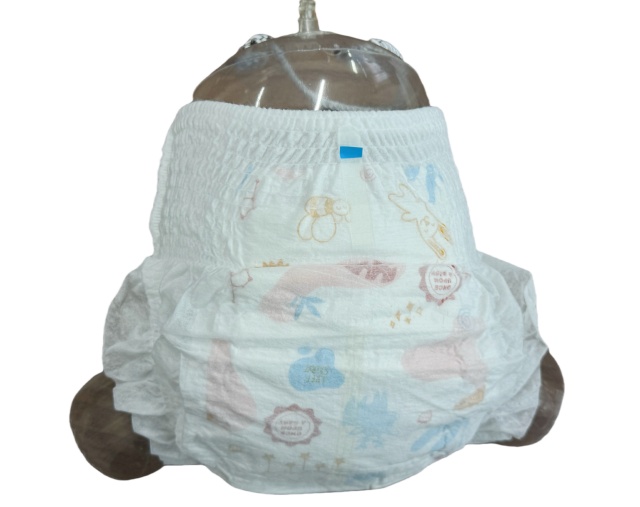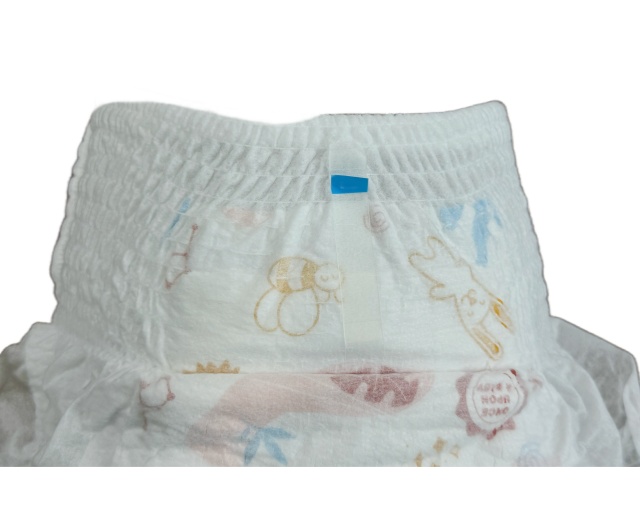The disposable tape used on diapers, including those for pull-up diapers (拉拉裤), is a critical component in ensuring proper fit, security, and comfort for the child. While seemingly simple, the material and design of the adhesive tape are the results of extensive research and development. Understanding the average lifespan of this disposable tape requires an analysis of several factors, including the materials used, environmental conditions, storage, and frequency of diaper use. This article aims to explain the key variables that influence the performance and longevity of disposable tape on diapers, emphasizing the role of material selection and environmental factors in determining how long the tape lasts in real-world scenarios.
Material Composition of Disposable Tape on Diapers
Disposable tape used in pull-up diapers is typically composed of a combination of adhesive materials and non-woven fabrics. The adhesive component is often pressure-sensitive, ensuring that it sticks securely to the diaper material while allowing easy repositioning. Common materials used include synthetic rubber-based adhesives, which provide strong adhesion, and polyethylene or polypropylene films, which serve as the backing material for the tape. These polymers are chosen for their flexibility, durability, and cost-effectiveness. In the case of pull-up diapers, the adhesive must maintain its effectiveness during multiple adjustments, as parents may need to refasten the diaper to ensure proper fit. The overall quality of the adhesive and backing material largely determines the tape's lifespan, with premium materials offering a longer adhesive lifespan compared to more cost-effective alternatives.

Environmental Factors Affecting Tape Performance
One of the most significant factors influencing the lifespan of disposable tape on diapers is the environmental conditions under which the product is stored and used. Temperature and humidity, in particular, can greatly affect the performance of the adhesive. In hot and humid environments, the adhesive can soften or lose its grip, causing the tape to fail prematurely. Conversely, in cold environments, the adhesive may become too rigid and fail to properly bond with the diaper's surface. Additionally, exposure to direct sunlight or extreme temperatures during storage can degrade both the adhesive and backing materials, leading to a reduced tape lifespan even before the diaper is put to use. To mitigate these issues, manufacturers often conduct environmental stress testing to ensure that their tape adhesives perform well across a range of conditions, but no adhesive is immune to the effects of prolonged exposure to extreme temperatures or moisture.
Storage Conditions and Shelf Life
The lifespan of disposable diaper tape is not only determined by its use but also by how the diapers are stored before they are used. The shelf life of disposable diapers, including the functionality of the adhesive tape, is typically estimated to be around two to three years when stored in optimal conditions. Diapers should be kept in a cool, dry place, away from direct sunlight and moisture. If stored improperly—such as in overly hot, damp, or exposed environments—the adhesive on the tape may begin to degrade long before the diaper is used. This degradation can cause the tape to lose its adhesive properties, reducing the overall effectiveness of the diaper. While some tape designs can tolerate a degree of environmental stress, long-term exposure to suboptimal storage conditions will inevitably shorten the tape’s useful life.
Frequency of Use and Impact on Longevity
The frequency with which a diaper is adjusted or removed plays a significant role in determining the lifespan of its disposable tape. Unlike standard adhesive tape, which is designed for single-use applications, the tape on pull-up diapers is typically designed for multiple fastening and unfastening actions. However, each time the tape is adjusted, a small amount of adhesive may be lost, and the bond may weaken slightly. As a result, the more frequently the diaper is adjusted, the shorter the lifespan of the adhesive. Parents who frequently check or adjust their child’s diaper may find that the tape loses its grip more quickly, especially if the diaper is being used for extended periods of time. Additionally, tape that is exposed to substances like lotion, oils, or powders may lose its adhesive properties faster, as these materials can interfere with the adhesive's ability to bond to the diaper surface.
Advances in Adhesive Technology
In recent years, there have been numerous advancements in the technology behind disposable tape used in diapers, particularly in the development of more durable adhesives that maintain their grip over time. Some of the latest innovations include adhesives that are more resistant to temperature changes and moisture, as well as tapes that are designed to provide a secure fit even after multiple adjustments. These newer adhesives often use a combination of synthetic rubber and thermoplastic elastomers, which provide both flexibility and strong bonding capabilities. Additionally, advancements in the non-woven materials used as backing for the tape have improved the overall durability and longevity of disposable tapes. Manufacturers are increasingly focusing on creating adhesives that are not only long-lasting but also gentle on a child’s skin, reducing the likelihood of irritation or discomfort caused by frequent diaper changes.
Conclusion: Lifespan and Practical Considerations
In conclusion, the average lifespan of disposable tape on diapers, particularly pull-up diapers, is influenced by a combination of factors including the material composition, environmental conditions, storage methods, and frequency of use. Under ideal conditions, the tape can last for the entire intended shelf life of the diaper, typically around two to three years. However, real-world factors such as exposure to heat, moisture, and frequent adjustment can significantly shorten this lifespan. With advancements in adhesive technology and materials, manufacturers continue to improve the durability and reliability of disposable tape, ensuring that diapers remain secure and comfortable for as long as needed. For parents and caregivers, understanding these factors can help in choosing the right diaper and ensuring that it is stored and used in a way that maximizes the tape’s effectiveness, contributing to a better overall diapering experience.


